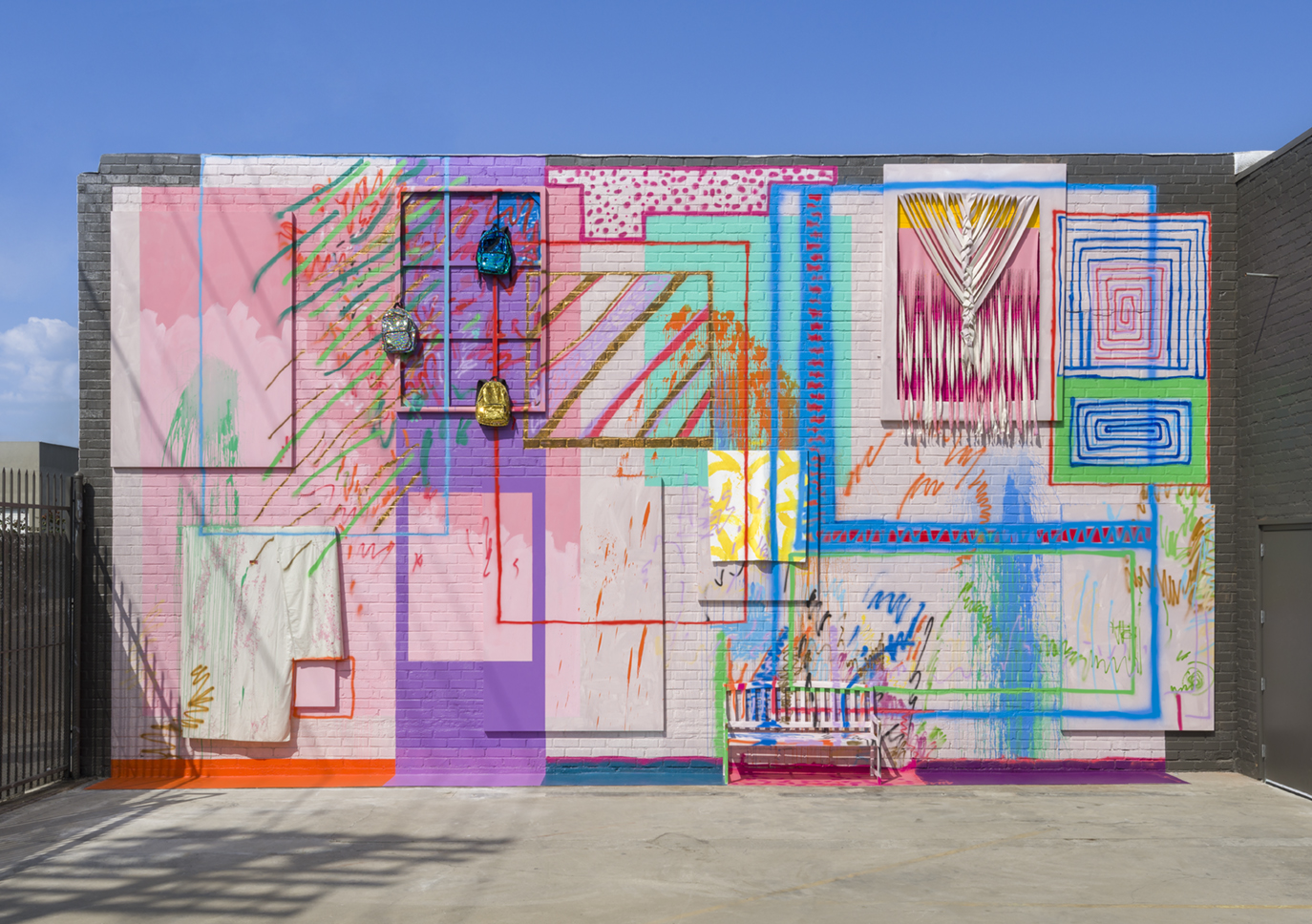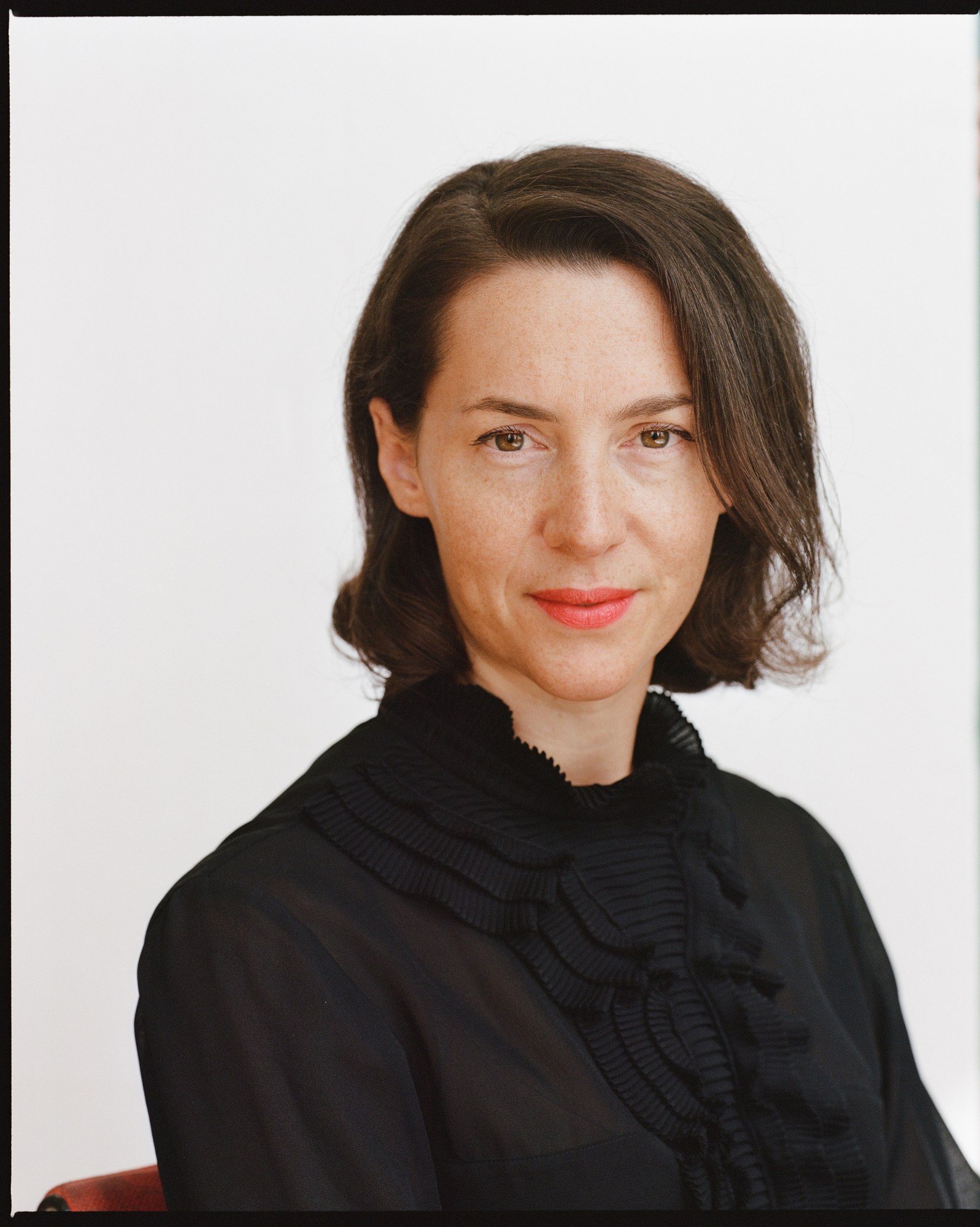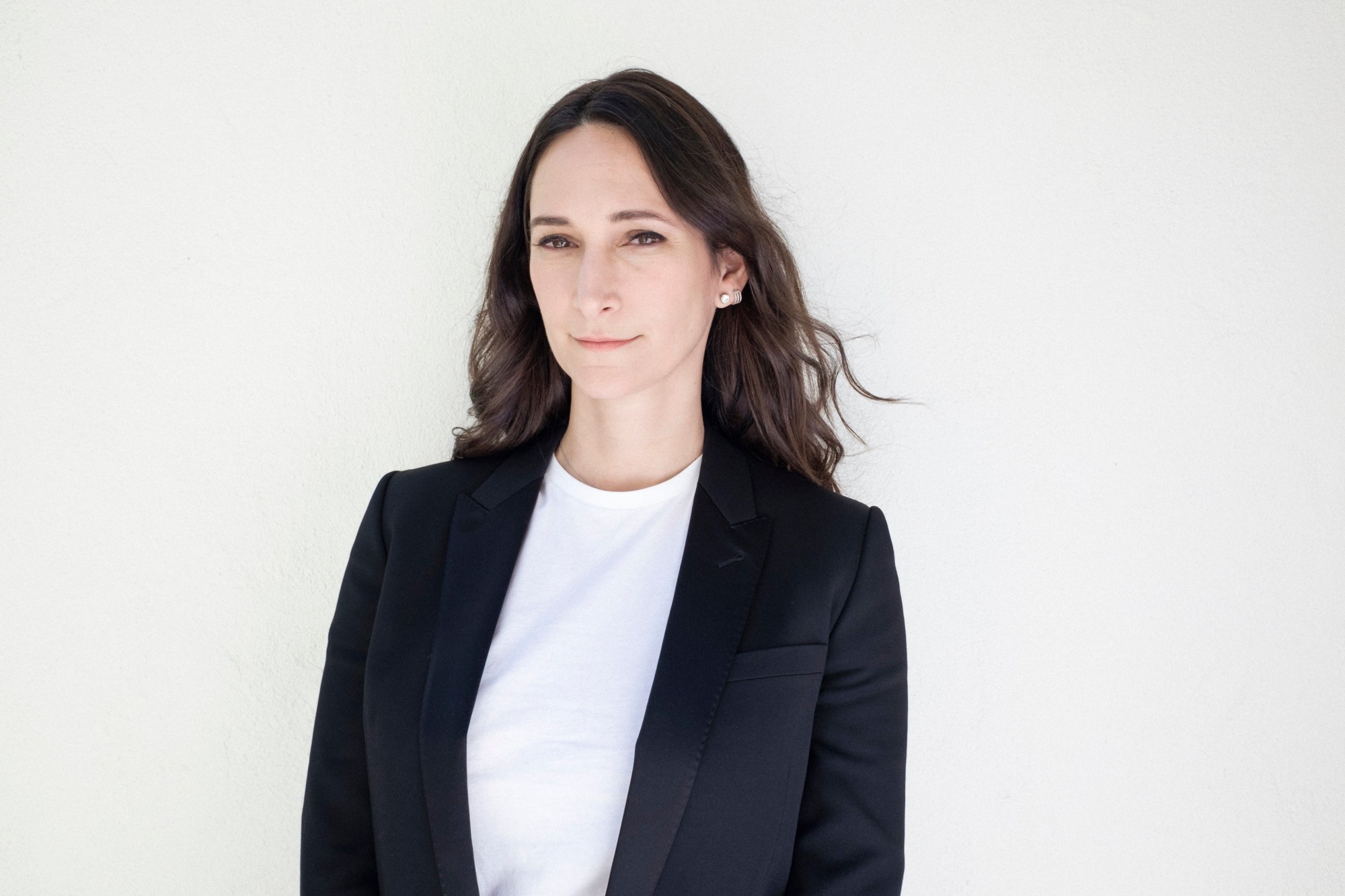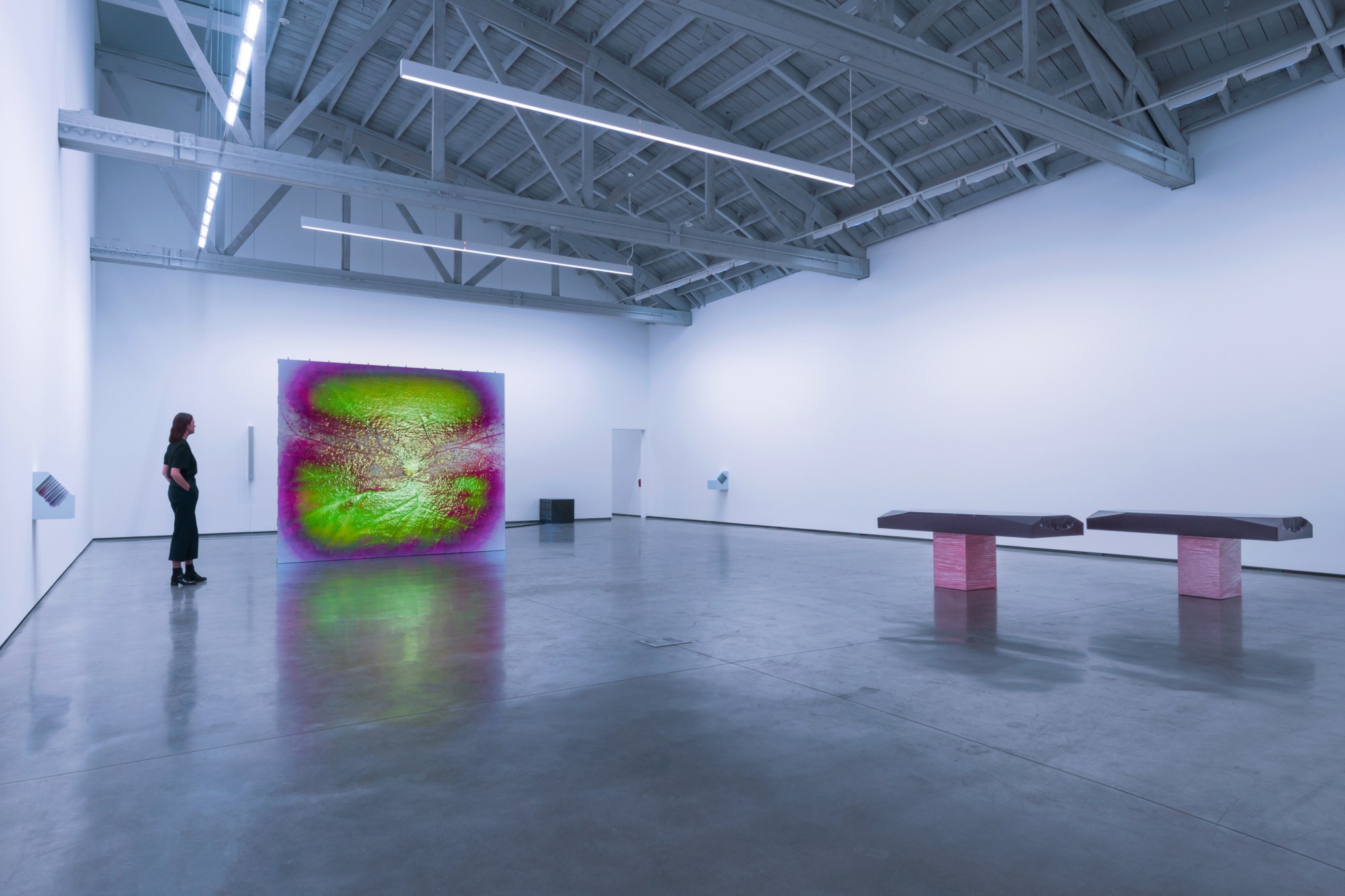For those following contemporary art in L.A., the weekend of February 15-17 is shaping up to be one of the busiest. Art Los Angeles Contemporary is celebrating its 10th year, while Felix, the brainchild of collector Dean Valentine, is entering its first. Also entering the mix is Frieze, the international fair that’s being hosted at Paramount Studios in Hollywood, also for the first time, in specially-designed Kulapat Yantrasast structure. Frieze LA demonstrates the media and events company’s desire to attract new audiences on the West Coast while showcasing local galleries that are operating amidst the city’s cultural renaissance. “It’s a very international list, but over a third [of the galleries] are either based in L.A. or have a gallery here”, notes Victoria Siddall, the Director of Frieze Fairs.
What began as a small art publication in London in 1991 by Amanda Sharp, Matthew Slotover and Tom Gidley, has ballooned into an international platform, consisting of Frieze the print publication, the online resource, a program of courses and lectures at Frieze Academy, and the Fairs spanning London, New York, and now, L.A.
Since being named Executive Director of the Los Angeles fair by Victoria Siddall, Bettina Korek has led an exceptional team (including curator of Frieze Projects and Film Ali Subotnick alongside curator of Frieze Talks and Music Hamza Walker) and become the face of the fair’s California iteration. i-D had the opportunity to speak with Bettina and Victoria on their respective journeys, what it’s like to actualize one of the most esteemed international fairs, and most importantly, why they believed it was time to move Frieze to the West Coast.
You’re a native of Los Angeles, raised at a time when many of the city’s art institutions were still fledgling. Growing up, what drew you to the art world?
BETTINA KOREK: My mom was a graphic designer, we looked at art together. As I began to meet artists and work with institutions—my first job out of college was in the Prints and Drawings Department at LACMA—I began to connect the dots about how what’s happening in L.A.’s art world relates to L.A. as a whole. L.A.’s art world has always been shaped by artists, and still is. The impetus for founding ForYourArt was to centralize information about what was happening in L.A.’s art world, to try to make art a bigger part of everyday life. Now we are really living in a time when it is.

As someone who’s dedicated their life to making art more accessible, founding ForYourArt, and keeping your finger on the pulse of happenings and events, do you find L.A. has “matured” as an art capital, or merely been given long-overdue recognition in the international spotlight?
BK: Very much the latter–while I think L.A. has long been recognized within the art world as an art capital, a number of things have happened over the past ten years that have increased the general consciousness about art in the city. In particular, The Getty’s Pacific Standard Time initiative canonized the post-war art history of Los Angeles here and internationally, and its second edition, PST LA LA, placed Latin American and Latinx art in dialogue with Los Angeles at 70 institutions.
Planning and executing an art fair in a new city, on this scale, is a huge feat. What have your biggest challenges, logistically or otherwise, been? Any sleepless nights?
BK: The Frieze team could not be more prepared to take on the challenge of producing a fair here in LA. I owe a lot of gratitude to my fellow Angelenos, from all the participating galleries to our incredible host committee, who have really rolled out the red carpet for Frieze Los Angeles.

Hosting Frieze at Paramount Pictures Studios underscores the intrinsic relationship between the art world and the entertainment industry in the city. Is it your vision to see these worlds more integrated?
BK: These worlds are already integrated in many ways, and this is one of the most distinctive things about the art landscape of L.A.—the proximity too and collaboration across different creative industries. In terms of the entertainment world and the art world, and contemporary art becoming a more present part of contemporary culture, I would say it’s less my personal vision and more an observation that, yes, there’s a certain inevitability to how audiences and contexts are expanding now. It’s exciting to be at the center of where this is happening.
I read you first connected with Frieze in 2003 by finding an ad in the Guardian while the publication was working on its inaugural London fair. What’s it like being the director of not just one, but three massive Frieze fairs?
VICTORIA SIDDALL: I saw the ad for the role at Frieze just before the first fair in London in 2003 and applied thinking it sounded interesting. Then I came to the fair and thought this is exactly what I want to do. It created an extraordinary buzz in the city and brought so many people together from all over the world. There was also a magical quality about this fair that appeared in Regent’s Park and took over the city for one week.
I started at Frieze soon after the first fair as head of sponsorship and began partnerships with Deutsche Bank and BMW who we still work with today. In 2012 I launched Frieze Masters as Director and then a few years ago I took over running all of the fairs from the Founders. Now we are about to launch Frieze Los Angeles, our fourth fair. It means there is no quiet moment in the year anymore but it’s incredibly exciting – my role is extremely varied and every day is different.

Why did you believe it was the time to expand to the West Coast? What has the process been in amassing your esteemed team and forging partnerships?
VS: Los Angeles has a thriving art scene, it has always been important because of its world-class art schools, museums and galleries and this has only expanded in recent years. What we hope to create with Frieze LA is a moment when the art world focuses entirely on this city and people come from all over the world to celebrate it.
The first step was finding out if the city wanted this so we spoke with the museum directors and gallery owners in LA to ensure they would support this. The next and very important step was building a fantastic team on the ground. Bettina Korek was our first choice to take the helm and we were thrilled that she agreed to be executive director of the new fair. Add to that Ali Subotnick, Hamza Walker and Kulapat Yantrasast and we have an amazing group of people working on the fair who live in LA and know the city inside out… Bettina built a really strong host committee of collectors and museum directors in LA …and of course we have the advantage of our partnership with Endeavor who have such deep roots in this city and have given us both expertise and support to get the fair off the ground.
At the heart of any fair is the list of galleries taking part and I am really proud of this one. It’s a very international list but over a third are either based in LA or have a space here so there is a strong local presence too, including a section of young galleries from the city.

When all is said and done, what do you hope Frieze LA will achieve? What are your aspirations for the fair’s success?
VS: Our aim is to create an annual moment that both shines a light on the extraordinary art scene of LA and also generates a successful business opportunity for the participating galleries, both in terms of selling art and meeting new collectors. There is so much potential for this and it was evidenced by the enthusiasm from galleries to participate in the fair and from collectors, curators and the public to attend. We have almost sold out of tickets at the weekend which shows the appetite locally.
The fair is international in content and ambition – participating galleries come from as far afield as Seoul, Sao Paulo, Berlin, Mexico City and Tokyo – and we are bringing visitors from all over the world too.
We want to make a positive impact on the city through initiatives like the Hammer Fund which allows the museum to come and buy art at the fair with money we have raised. The economic impact of the many people flying in for Frieze will be significant too. It’s important to us that this is not just about the fair – it’s Frieze Week across the city, spanning museums, galleries, nonprofits and sparking events that celebrate LA’s vibrant art scene.
Despite the region’s reputation as a haven for sun, weather on the horizon could be rainy! Are there any concerns the weather could affect the actualization of any programs or performances outside?
VS: The galleries at Frieze LA will all be in a tent, as they are at our other fairs. Our fantastic Talks and Film programmes will of course take place in theatres so they are also indoors. What makes Frieze LA unique is that the programme is spread throughout the Paramount Studios lot making it quite a magical experience. All the Frieze Projects artworks have been created to be outdoors and made accordingly, visitors should of course keep in mind that they will be outside. We have Frieze Sculpture in London and have just announced one at Rockefeller Center in New York so we are used to showing art outdoors and people are used to seeing it in that context.
